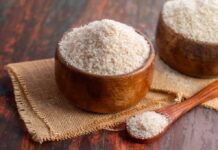
Building muscle effectively after 40 requires a holistic approach that integrates mindset, proper training techniques, and nutrition—ignoring any one element could be why you’re not seeing results despite your efforts.
At a Glance
- After age 30, men lose 3-5% of muscle mass per decade, but weight training can slow or reverse this decline
- Only 30% of Americans meet recommended strength training guidelines despite numerous health benefits
- Focusing on health and functionality rather than aesthetics leads to more sustainable results
- Proper nutrition with adequate protein intake (approximately 1 gram per pound of body weight) is essential for muscle repair
- Signs of progress include increased strength and endurance, even before visible muscle changes appear
Age-Related Muscle Loss: A Challenge You Can Overcome
The biology of aging presents real challenges for maintaining muscle mass. After age 30, men typically lose 3-5% of muscle mass each decade, with testosterone levels beginning to decline after age 40. For those over 60, this accelerates to about 1% loss annually. These statistics may seem discouraging, but research consistently shows that resistance training can effectively slow or even reverse this decline, regardless of your current age or fitness level.
Despite the clear benefits, only 30% of Americans meet the recommended strength training guidelines of at least two sessions per week. Many people avoid strength training due to intimidation, lack of knowledge, or misconceptions about what’s required. The good news? You don’t need fancy equipment or a gym membership to get started. Bodyweight exercises can be remarkably effective for building muscle, especially for beginners or those returning to fitness after a break.
The Mental Approach: Shifting Your Focus
One of the most powerful shifts you can make is changing your motivation for strength training. Dr. Ernie Rimer, strength and conditioning specialist at the University of Utah, suggests focusing on how strength training improves your daily life rather than purely aesthetic goals. This mental shift promotes consistency—the true foundation of any successful muscle-building program. When you train for functionality and health, you’re more likely to maintain your routine long-term.
Patience is equally important. Visible muscle development takes time, and many people abandon their efforts prematurely. Understanding that increased strength, better endurance, improved sleep quality, and enhanced energy levels are early signs of progress can help maintain motivation while waiting for visible changes. These functional improvements often precede noticeable physical transformations by weeks or months.
Training Effectively: Quality Over Quantity
The concept of “Exercise Microdosing” has gained traction among fitness experts, suggesting that shorter, more frequent bouts of exercise may yield better results than longer, less frequent sessions. This approach is particularly valuable for older adults who may find lengthy workouts intimidating or physically challenging. Even 10-15 minutes of focused resistance training several times weekly can produce meaningful results when performed consistently.
For equipment choice, free weights generally offer more complete muscle development than machines because they engage stabilizing muscles and promote better coordination. However, machines have their place, especially for those with balance concerns or joint issues. The key principle in any training program is progressive overload—gradually increasing resistance or repetitions to continuously challenge your muscles.
Compound exercises like squats, deadlifts, push-ups, and rows should form the foundation of your program as they engage multiple muscle groups simultaneously, maximizing efficiency. Research has shown that training with lighter weights and more repetitions can be just as effective for muscle building as heavy weights, offering flexibility in how you structure your workouts.
Nutrition: Fueling Muscle Growth
Proper nutrition is non-negotiable for muscle development, particularly protein intake. For active adults looking to build muscle, approximately 1 gram of protein per pound of body weight daily is a useful target. Timing matters too—consuming protein within the recovery window after exercise enhances muscle protein synthesis. Some research even suggests benefits from consuming amino acids and carbohydrates before workouts.
Hydration plays a crucial but often overlooked role in muscle development. Adequate water intake supports nutrient transport, waste removal, and optimal cellular function. For adults over 40, managing inflammation through diet becomes increasingly important, making anti-inflammatory foods like fatty fish, berries, turmeric, and leafy greens valuable additions to your nutritional strategy.
Recovery is equally important as the training itself. Muscle growth occurs during rest periods, not during workouts. Ensure adequate sleep (7-9 hours nightly) and avoid overtraining, which can actually inhibit progress. A sustainable approach might include 2-3 full-body strength sessions weekly, allowing 48 hours between training the same muscle groups for proper recovery.
The Broader Benefits: Beyond Muscle
The advantages of strength training extend far beyond aesthetics. Regular resistance training improves cardiovascular health by lowering blood pressure and cholesterol levels. It enhances bone density, crucial for preventing osteoporosis as you age. For adults with joint issues, properly performed strength exercises can reduce pain and improve function by strengthening supporting muscles around problematic joints.
Metabolically, muscle tissue burns more calories at rest than fat tissue, supporting weight management goals. Strength training also improves insulin sensitivity and blood sugar control, making it valuable for preventing or managing type 2 diabetes. These health benefits provide powerful motivation beyond the mirror, reinforcing the value of maintaining your strength training routine even when visible progress seems slow.
By embracing this holistic approach to muscle development—integrating proper mindset, effective training techniques, and supportive nutrition—you can achieve meaningful progress regardless of your age or starting point. Remember that consistency trumps intensity, and sustainable habits yield the most impressive long-term results.


















